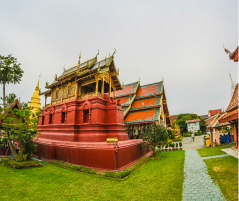Halloween, a celebration that has grown into a cultural phenomenon, is much more than just costumes and candy. Its roots run deep, intertwined with ancient traditions and evolving societal values. By unpacking Halloween’s history and cultural significance, we can appreciate the complexities that have shaped this holiday into what it represents today. This article delves into the origins and evolution of Halloween, revealing how ancient rituals have transformed into modern festivities that continue to captivate people around the world.
Unpacking Halloween: A Historical and Cultural Exploration
The origins of Halloween can be traced back to the ancient Celtic festival of Samhain, which took place on the evening of October 31st. This festival marked the end of the harvest season and the onset of winter, a time often associated with death and the supernatural. The Celts believed that on this night, the boundary between the living and the dead was blurred, allowing spirits to roam the earth. To ward off these wandering souls, people would light bonfires and wear masks, traditions that resonate in today’s Halloween celebrations. This historical context is crucial for understanding how Halloween has evolved over the centuries.
As the centuries progressed, the arrival of Christianity significantly impacted Halloween’s cultural identity. In the 8th century, Pope Gregory III designated November 1st as All Saints’ Day, a day to honor saints and martyrs. The night before, which fell on Samhain, became known as All Hallows’ Eve, eventually shortening to Halloween. This merging of pagan and Christian traditions reflects broader cultural dialogues about life, death, and the afterlife. The way society grapples with these themes speaks volumes about its values and beliefs, making Halloween a rich tapestry of cultural significance.
Today, Halloween serves as a lens through which we can examine contemporary societal issues, from consumerism to community bonding. The shift from a solemn observance of the dead to a festive celebration of costumes and candy highlights changing attitudes toward mortality and the supernatural. This transformation invites us to question the implications of such changes in cultural practices, from the commodification of traditions to the way we engage with the themes of fear and playfulness in our lives. As Halloween continues to evolve, it remains a potent symbol of the interplay between history and modernity.
The Evolution of Halloween: From Ancient Rituals to Modern Festivities
The transformation of Halloween from ancient rituals to contemporary festivities is a fascinating journey that encapsulates the changes in societal values and beliefs. Initially a festival rooted in fear and reverence for the dead, Halloween’s evolution saw it embrace a more playful and communal spirit. This shift gained momentum in the United States in the mid-20th century, when Halloween became increasingly commercialized. The introduction of trick-or-treating and the widespread popularity of costumes contributed to a more family-oriented approach, distancing the holiday from its morbid origins. This evolution challenges us to consider how commercialization influences cultural practices and the preservation of traditional beliefs.
Moreover, the integration of various cultural elements into Halloween celebrations reflects the diverse society that shapes our contemporary world. In the 19th century, Irish immigrants brought their customs to America, infusing the holiday with new life and meaning. The modern version of Halloween is now a melting pot of influences, borrowing from different cultures and adapting to the times. This blending of traditions raises important questions about cultural appropriation, authenticity, and the ways in which communities navigate their identities. By recognizing the multifaceted nature of Halloween, we can better understand how cultural practices evolve and adapt over time.
However, while Halloween’s transformation into a festive occasion may appear benign, it also invites scrutiny over the commercialization of culture. The emphasis on consumerism—exemplified by the mass production of costumes, decorations, and candy—can overshadow the holiday’s historical significance. This commercialization raises concerns about the commodification of cultural traditions and the potential loss of their original meanings. As we navigate this evolving landscape, it is essential to strike a balance between celebrating the joy of Halloween and respecting its rich history, ensuring that the holiday remains a meaningful expression of cultural heritage.
In conclusion, the cultural significance and origins of Halloween are deeply rooted in a complex interplay of historical, religious, and social factors. Understanding this evolution from ancient rituals to modern festivities allows us to appreciate the holiday beyond its surface-level allure. As Halloween continues to grow and change, it remains a powerful reflection of our collective consciousness, reminding us of the enduring human fascination with life, death, and the supernatural. By acknowledging and respecting its rich heritage, we can ensure that Halloween continues to be a meaningful celebration for future generations.





